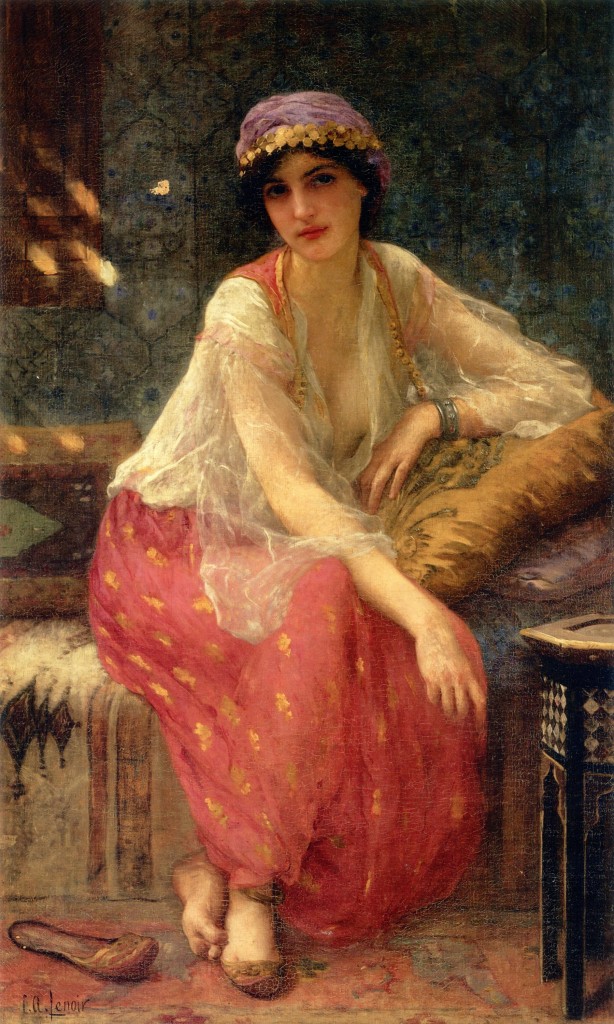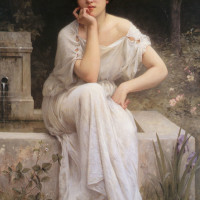| Painting Name | Odalisque |
| Painter Name | Charles Amable Lenoir |
| Size | 81.28 x 138.43 cm (32" x 4' 6½") |
| Technique | Oil |
| Material | Canvas |
| Current Location | Private collection |
Portrayed woman was a concubine in the harem of one of the kings of the Ottoman dynasty and most probably the king lived between 1860 to 1926 as that’s the lifespan of the French artist, Charles Amable Lenoir, who has depicted this painting. The Ottoman kingdom lasted until 1922, so it is most probable that the woman in the portrait is an actual concubine from the Ottoman harem.
The word, Odalisque, originate from Turkish and meant a chambermaid. An Odalisque didn’t necessarily served the king but served the concubines of the king. But, if she has some sort of skill or beauty enough to represent her to the king or make her one of his concubines she could have a ‘promotion’. She could even be a wife of the king if she becomes pregnant through the king. Though, in most cases, the king would see any concubine only for once in his lifetime and after that, the concubine would whether stay in the harem or could be sold to another rich person of the society becoming his concubine or wife. People in the Turkish society accepted this practice as making one of the concubine a wife didn’t bring the other unwanted relationships and the woman would totally depend on his husband. Also, another reason could be that, the concubines chosen for the kings were extremely beautiful and delicate.
Odalisques are said to be oppressed creatures in the society and most weren’t happy with their lives as they weren’t in control of their lives as their owners could any time sell them to anyone. The new owner could be rarely a nice guy or a bad tempered person always instead of deeming the Odalisques as living woman he would think of her as his property whom he could kill if he wants. Their lives as an Odalisque wasn’t chosen but mostly forced and victimized.
That was the life of a normal concubine or an Odalisque in the Ottoman empire. Polygamy was an accepted custom in Ottoman and Islamic society of the time as well as trade of slaves and concubines was also very much allowed. The Favorite by Otto Pilny captures one of such trade happening in the middle Eastern lands during the similar times.
Odalisque had became a prominent figures in the artistic movement of Orientalism and many artists of the movement created erotic Odalisque paintings. Notable artists like Eugene Delacroix and Ingres have also taken interest in the subject. Grande Odalisque by Ingres is a known art-work on the subject.


 (6 votes, average: 3.50 out of 5)
(6 votes, average: 3.50 out of 5)


